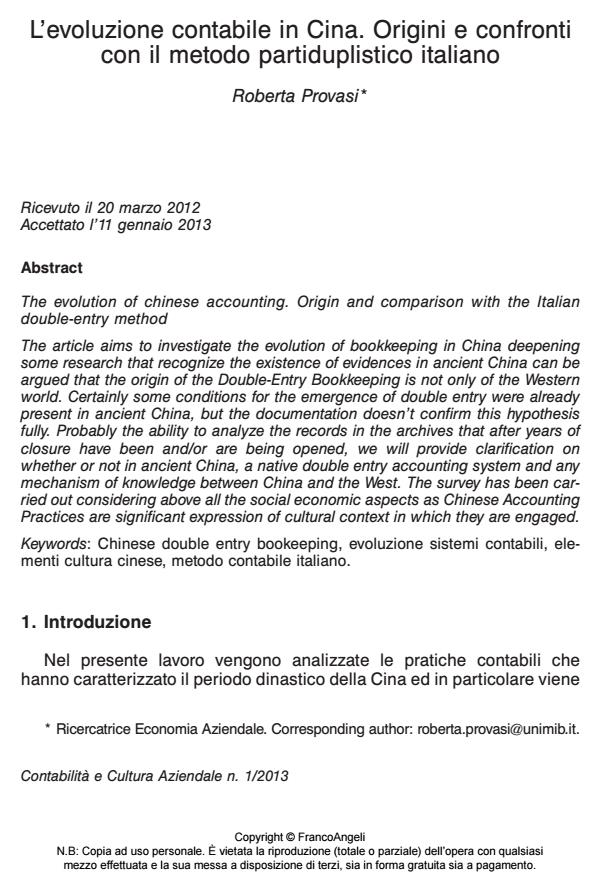The evolution of chinese accounting. Origin and comparison with the Italian double-entry method
Journal title CONTABILITÀ E CULTURA AZIENDALE
Author/s Roberta Provasi
Publishing Year 2013 Issue 2013/1
Language Italian Pages 25 P. 91-115 File size 526 KB
DOI 10.3280/CCA2013-001005
DOI is like a bar code for intellectual property: to have more infomation
click here
Below, you can see the article first page
If you want to buy this article in PDF format, you can do it, following the instructions to buy download credits

FrancoAngeli is member of Publishers International Linking Association, Inc (PILA), a not-for-profit association which run the CrossRef service enabling links to and from online scholarly content.
The article aims to investigate the evolution of bookkeeping in China deepening some research that recognize the existence of evidences in ancient China can be argued that the origin of the Double-Entry Bookkeeping is not only of the Western world. Certainly some conditions for the emergence of double entry were already present in ancient China, but the documentation doesn’t confirm this hypothesis fully. Probably the ability to analyze the records in the archives that after years of closure have been and/or are being opened, we will provide clarification on whether or not in ancient China, a native double entry accounting system and any mechanism of knowledge between China and the West. The survey has been carried out considering above all the social economic aspects as Chinese Accounting Practices are significant expression of cultural context in which they are engaged.
Keywords: Chinese double entry bookeeping, evoluzione sistemi contabili, elementi cultura cinese, metodo contabile italiano.
Roberta Provasi, L’evoluzione contabile in Cina. Origini e confronti con il metodo partiduplistico italiano in "CONTABILITÀ E CULTURA AZIENDALE" 1/2013, pp 91-115, DOI: 10.3280/CCA2013-001005